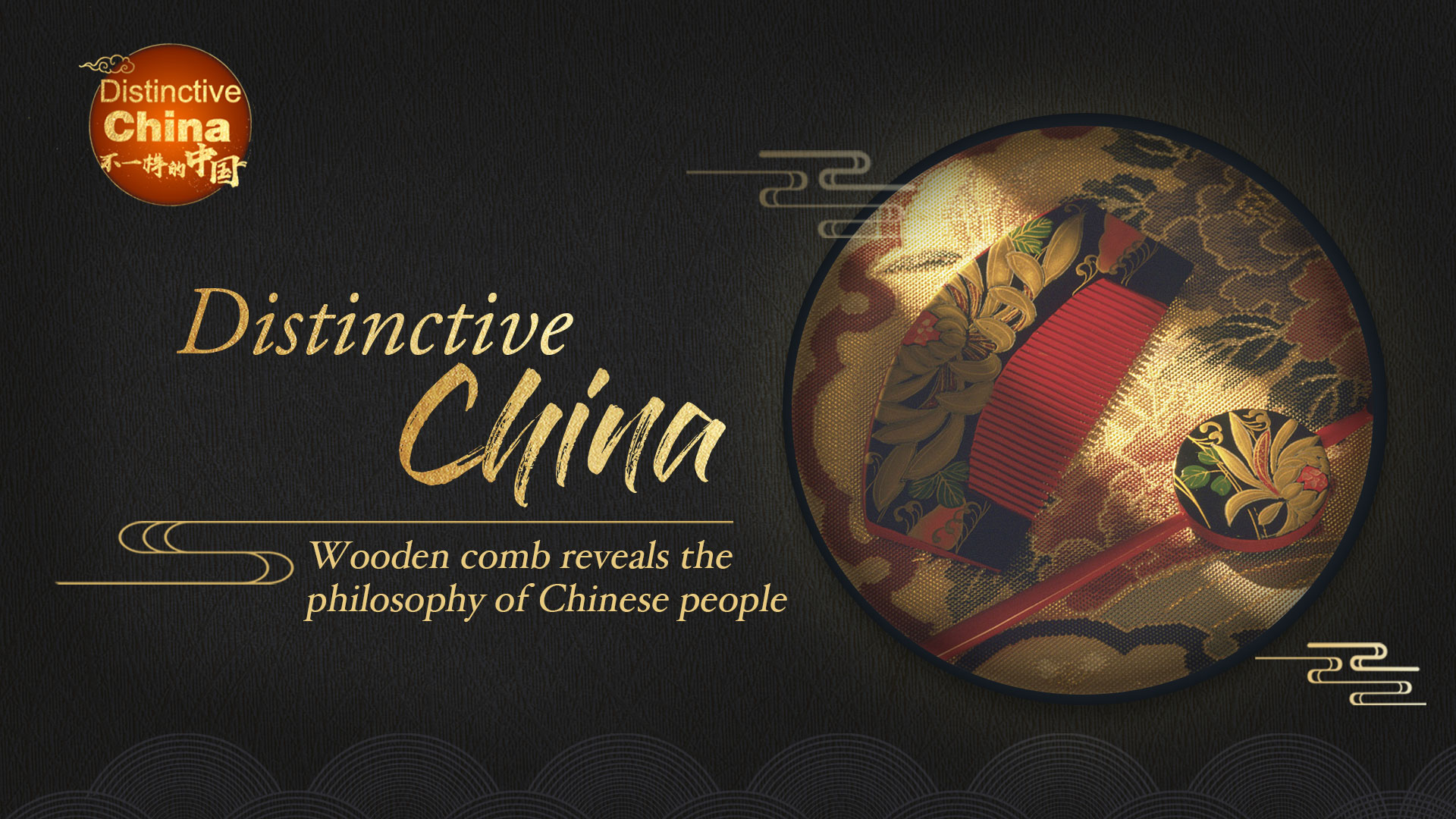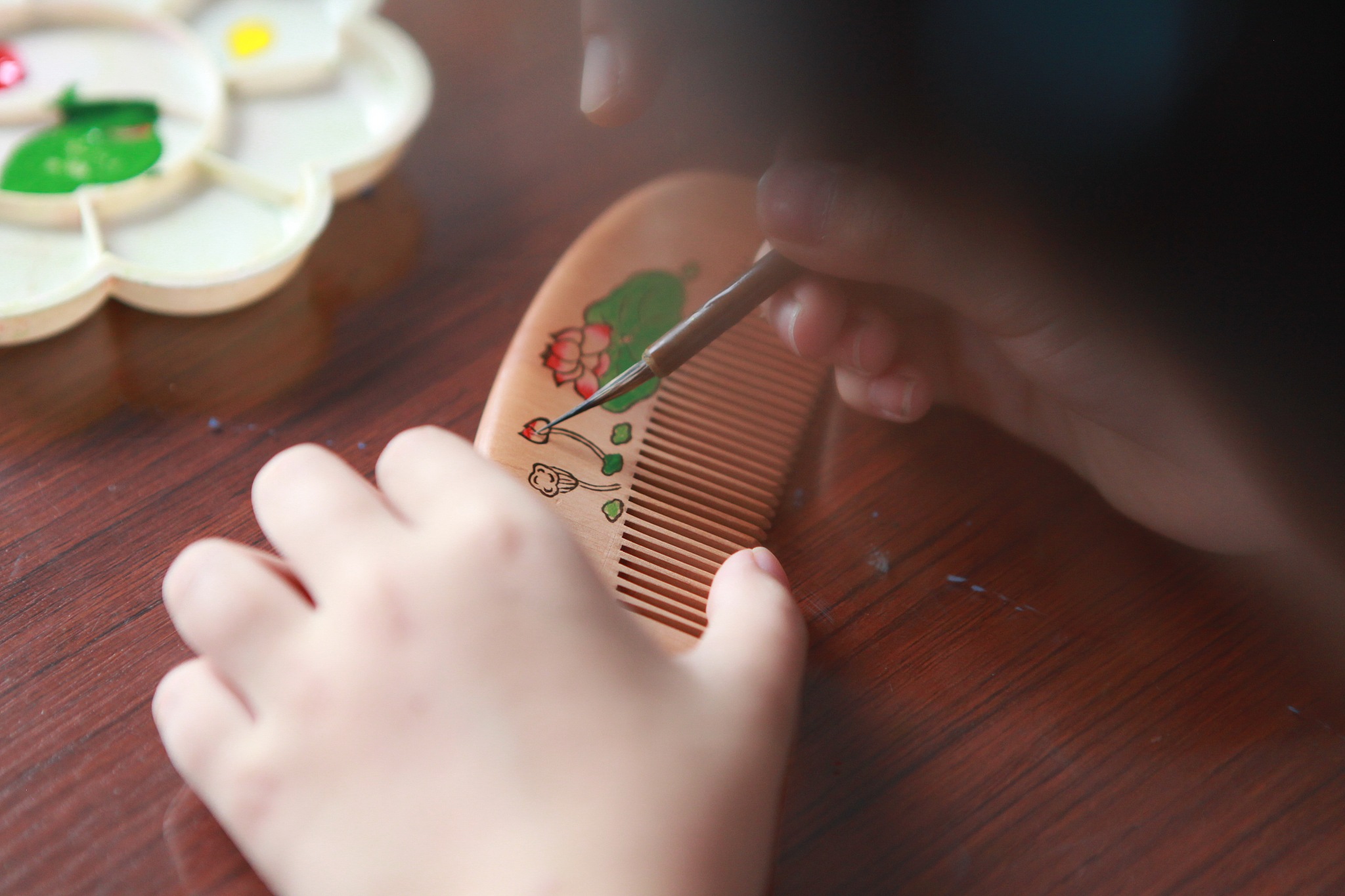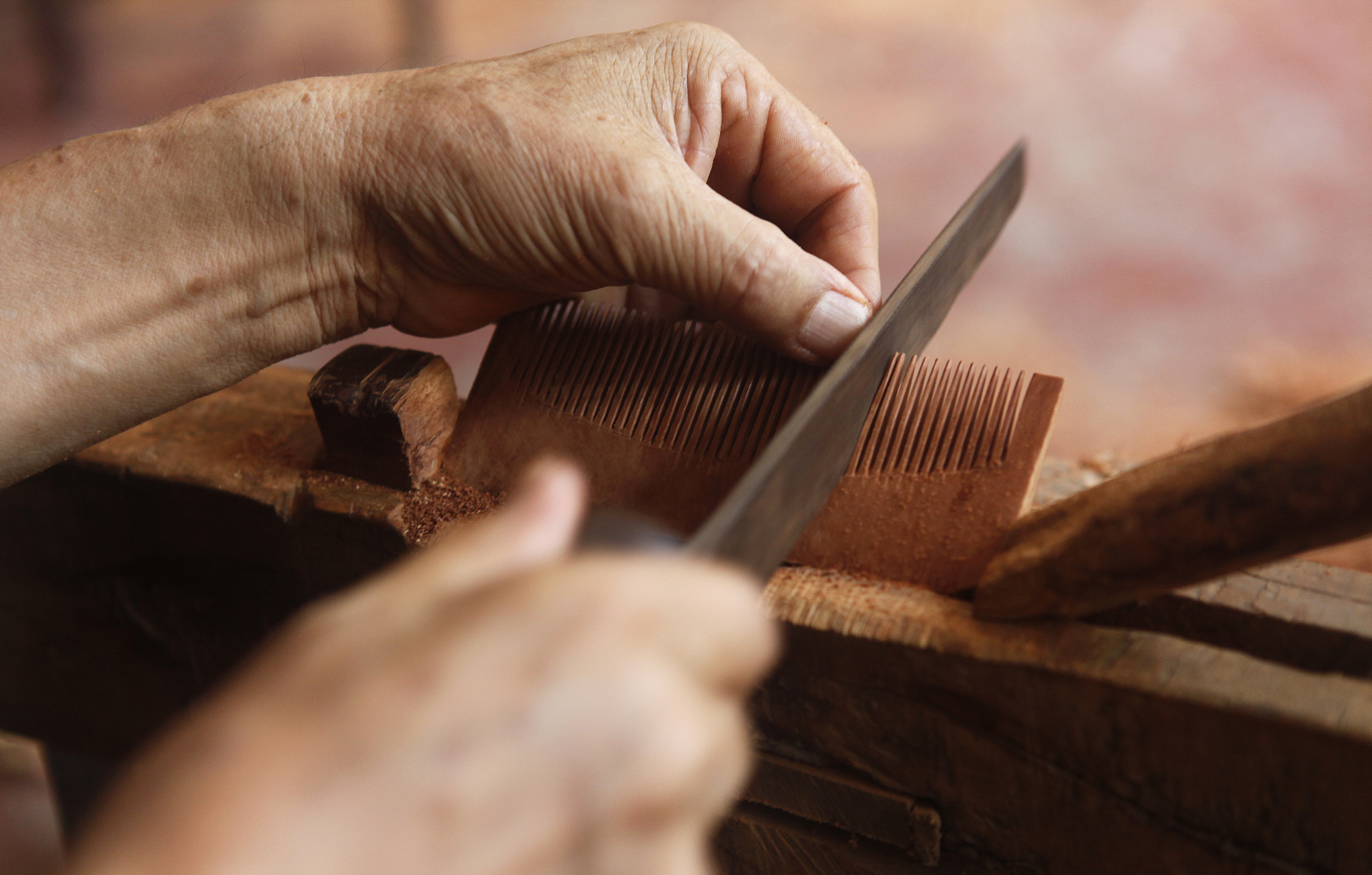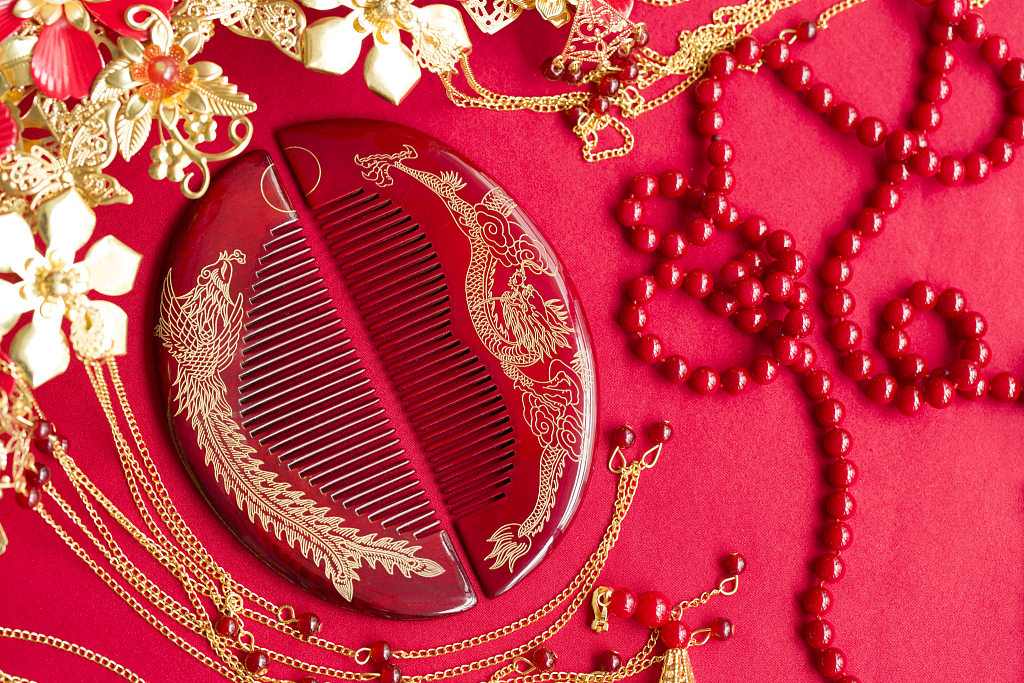03:56

The comb is an essential part of modern life, but it also has a time-honored history dating back 6,000 years. Legend has it that one of Yellow Emperor's (2717 BC -2599 BC), or Huangdi's wives had the first comb made in the shape of a fish bone.
It's regarded as one of the traditional handicrafts in China. Most were made from bamboo, wood and animal bones. Every generation decorated the comb in their own way, with colorful patterns and pictures of historical figures, landscapes, animals, opera characters and so forth.
"The Chinese comb originated in Changzhou," said Jin Songqun, the National Intangible Cultural Heritage inheritor of comb in Changzhou City, east China's Jiangsu Province. Changzhou comb was listed in the second batch of national intangible cultural heritage list on June 7, 2008.

A student paints lotuses on a wooden comb in Changzhou City, east China's Jiangsu Province. /CFP
A student paints lotuses on a wooden comb in Changzhou City, east China's Jiangsu Province. /CFP
"Its real heyday unfolded during the Ming Dynasty (1368-1644) when Changzhou combs were produced on a massive scale. A comb unearthed in 1973 was found to be around 1,600 years old as per historical references. Producing combs is a major industry in Changzhou now," Jin added.
To make a good comb involves 28 complicated steps, including cutting, boiling, drying, polishing, and decorating. According to Jin, drying is the longest step in the process.
It takes a long time and excellent technique to make a good comb. Some craftsmen will incorporate his thinking into the process of making. "The uniqueness of the Chinese wooden comb comes from its finishing touches," said Jin.

The process of making a wooden comb. /CFP
The process of making a wooden comb. /CFP
The Changzhou comb enjoys a widespread reputation for its exquisite workmanship and long history. It has won over 10 gold and silver medals at domestic and international exhibitions, including Philadelphia International Exposition Gold Award in 1926, the National Silver Award in 1981, and the China Tourism Commodity Exposition Gold Award in 1991 and 2004.
The beauty of the comb is elevated with carvings, drawings, engravings, ironings and inlays, bringing out emotions and culture through the designs, according to Jin.

Chinese people attach their emotions to the combs. /CFP
Chinese people attach their emotions to the combs. /CFP
While maintaining the practical features of the wooden comb, Chinese people also attach many feelings to their combs.
In ancient times, it was a tradition that a woman had to have a family member comb her hair before she gets married. There is an old saying, the first comb sweeps to the end, and the second that you will stay together till your hair greys, and the third to wish the couple many children and grandchildren. This not only contains the best wishes of the family but also conveys their love.
(Cover image designed by Li Jingjie)

